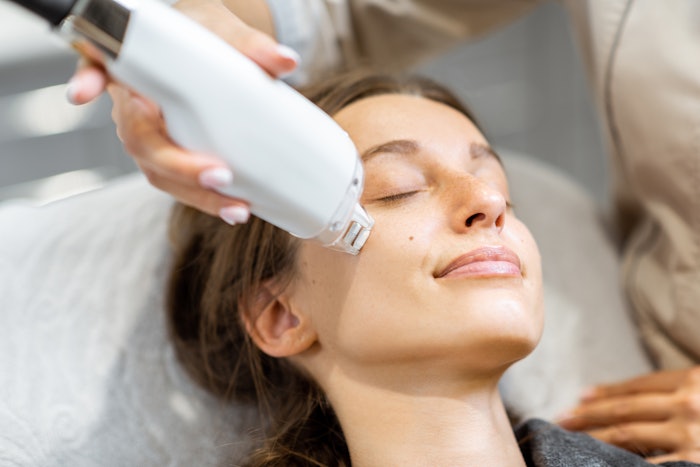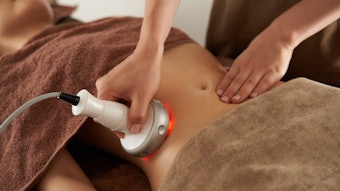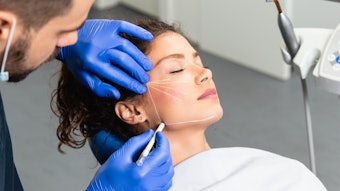
The medspa industry is experiencing a surge in mergers and acquisitions (M&A) activity. Driven by factors like increased consumer demand for non-invasive cosmetic procedures, the entry of private equity firms and the desire of existing owners to exit the market, acquisitions are becoming increasingly common. Here’s how you can prepare your business for acquisition and achieve the optimal sale conditions.
Key Drivers of Medspa M&A
The medspa M&A market is expected to continue to grow in the coming years (as detailed by Solomon Partnersa), driven by ongoing industry trends and the increasing involvement of private equity. As the industry evolves, we can expect to see further consolidation, with larger platforms emerging to dominate the market.
In May 2024, we saw Princeton Medspa Partners receive an infusion of $120 million from private equity firm BC Partners, which currently has approximately $40 billion in managed assets. In addition, we saw Medspa Partners and Cosmetic Physician Partners add locations in 2024. All three companies are actively seeking medspas to acquire.
What’s driving these growth plans? A few key factors are at play:
Growing Consumer Demand: The aging population, coupled with a rise in social media influence and a greater focus on self-care, has fueled a significant increase in demand for non-surgical cosmetic treatments. This includes procedures like Botox and other toxins, fillers, laser hair removal, and various skin rejuvenation therapies.
Private Equity Investment: Private equity firms are actively investing in the medspa sector, recognizing its high growth potential. These firms bring significant financial resources and operational expertise, enabling acquired companies to expand rapidly.
Exit Strategies for Owners: Many medspa owners are seeking to exit the business, whether through retirement or to pursue other ventures. Acquisitions provide a viable exit strategy, allowing them to monetize their investment and ensure the continued success of their practice.
Consolidation and Scale: Acquisitions enable companies to achieve greater scale, leading to increased bargaining power with suppliers, improved operational efficiency and a stronger market position.
Benefits of Medspa Acquisitions
Expanded Market Reach: Acquiring another practice allows companies to enter new geographic markets or expand their service offerings to a wider customer base. Acquiring another practice allows companies to expand their service offerings to a wider customer base.buritora at Adobe Stock
Acquiring another practice allows companies to expand their service offerings to a wider customer base.buritora at Adobe Stock
Increased Revenue and Profitability: Combining patient bases and leveraging economies of scale can significantly boost revenue and profitability.
Access to Talent and Expertise: Acquisitions can provide access to skilled personnel, including experienced practitioners, aestheticians and management teams.
Enhanced Technology and Infrastructure: Acquiring a practice with advanced technology or a strong operational infrastructure can provide a competitive advantage.
Challenges of Medspa Acquisitions
Integration Challenges: Successfully integrating two or more practices can be complex, requiring careful planning and execution to ensure a smooth transition and maintain patient satisfaction.
Cultural Differences: Merging different company cultures can be challenging, requiring effective communication and leadership to ensure a harmonious working environment.
Maintaining Quality of Care: It's crucial to maintain high standards of patient care and safety throughout the acquisition process, while also ensuring regulatory compliance.
Valuation Challenges: Accurately valuing a medspa can be complex, requiring a thorough understanding of the business, its financials and the competitive landscape.
Best Practices for Medspa Sales
Selling a medspa requires careful preparation to maximize its value and attract the right buyer. Here's a breakdown of key steps:
Enhance Business Operations:
Streamline Processes: Improve efficiency in areas like scheduling, inventory management and client communication.
Boost Profitability: Analyze financial statements, identify cost-cutting measures and explore new revenue streams (e.g., membership programs, retail sales).
Client Retention: Implement strategies to retain existing clients and attract new ones through loyalty programs, referrals and targeted marketing.
Employee Training: Ensure staff is well-trained and knowledgeable about procedures, products and client service.
Prepare Financial Records:
Gather Financials: Compile 3-5 years of tax returns, profit and loss statements, balance sheets, and cash flow statements.
Clean up Records: Ensure all financial records are accurate, up-to-date and organized.
EBITDA Calculation: Determine your earnings before interest, taxes, depreciation and amortization to provide a clear picture of profitability.
Market Your Medspa:
Create a Professional Listing: Develop a compelling listing that highlights the business's strengths, unique selling propositions and growth potential.
Engage a Broker (Optional): Consider hiring a specialized med spa broker who can assist with valuation, marketing and negotiations.
Network: Attend industry events and connect with potential buyers within the healthcare and wellness sectors.
Due Diligence Preparation:
Gather Legal Documents: Compile leases, licenses, permits and any relevant contracts.
Prepare for Inspections: Ensure the facility is clean, well-maintained, and compliant with all safety and regulatory standards.
Address Potential Issues: Identify and proactively address any potential liabilities or challenges that could deter buyers.
Negotiate and Close the Sale:
Find the Right Buyer: Select a buyer who aligns with your vision for the business and is financially capable of completing the transaction.
Negotiate Terms: Carefully review and negotiate the terms of the sale agreement, including price, payment structure and any post-sale obligations.
Complete the Transaction: Work with legal and financial professionals to finalize the sale and transfer ownership.
Additional Tips:
Maintain Confidentiality: Keep the sale process confidential to avoid disrupting operations and impacting client relationships.
Highlight Unique Selling Propositions: Emphasize what makes your medspa stand out from the competition (e.g., specialized services, experienced staff, loyal clientele).
Increase your Public Image: It’s never too early to begin nurturing your public image. Securing a good public relations firm can be a strong first step toward generating trade and consumer press coverage that will make your business more attractive to potential investors. Be Patient: Selling a business takes time. Be prepared for the process to take several months or even longer.
By diligently preparing your medspa for sale, you can increase its value, attract serious buyers and achieve a successful transaction.
Francis X. Acunzo ([email protected]) is the co-founder and CEO of Acara Partners, a consulting agency for the aesthetic medical industry, and a senior adviser to the board of directors at Princeton Medspa Partners, an industry consolidation group that currently owns and operates 14 medical spas throughout the country. Acunzo also holds a seat on the MedEsthetics Editorial Advisory Board and was recently presented the Lifetime Achievement Award by The Aesthetic Guide and the ‘Distinguished Partner Award’ by Sciton. He is an experienced public speaker for aesthetic medical industry events, a regular contributor to publications and a guest on podcasts and radio broadcasts. Acunzo and his wife, Colleen, launched the very first medical spa 25 years ago through the merger of their Boston-based spa company and a leading laser company. Acunzo has extensive experience with medspa acquisitions, being involved in the execution of over 28 acquisitions involving 76 locations.
FOOTNOTE
ahttps://solomonpartners.com/wp-content/uploads/2024/04/Solomon-Partners-MedSpa-Market-Overview.pdf











